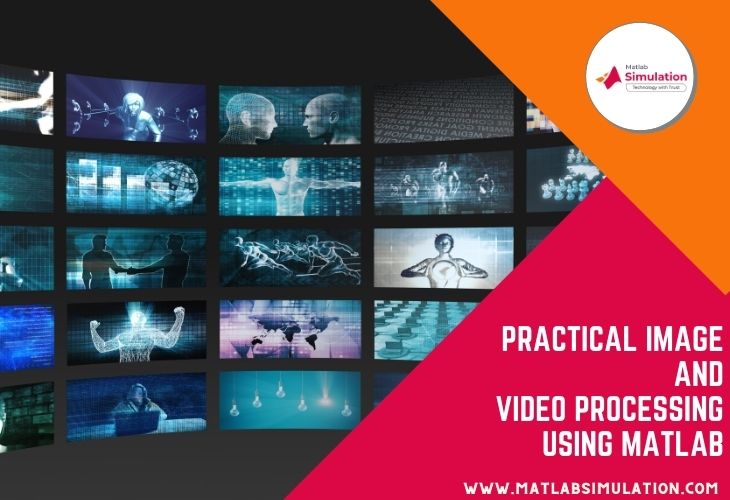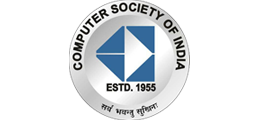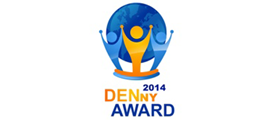Video is the collection of frames that are arranged sequentially. A frame refers to the images/pictures presented in a video. Hence video processing is similar to the processing of images i.e. also known as Frames. Video processing is can be done with the help of algorithms by finding the location and size of the object in the former frames presented. Further, the algorithms play an eminent role in detecting the edges in the images and videos. “This is the article which is fully contented with the interesting facts about the practical image and video processing using Matlab”
Generally, we are supposed to use and analyze various images and videos in the relevant areas. For instance, we are facing massive disasters in practical and they are unpredictable especially in the olden days. Image and video processing are widely used in the various fields of real-time applications like sentiment analysis, facial detections, and climate condition predictions.
The merits of image and video processing cannot be fingered out as they are numerous in numbers. As this article is focused on the same lets we have the furthermore explanations in the article’s flow. Now we can start this article with the key operations of the image and video processing with crystal clear points. Come let’s have them.
Top 10 Research Ideas for Practical Image and Video Processing using Matlab
- Stereoscopic Images & Videos Color Correction
- Live Video Quality Prediction & Designing
- Spatial & Temporal Dynamic Adaptive Streaming
- Full & No Reference Quality Estimations
- DCNNs Video Classifications in Rate-Accuracy Trade-Off
- Video Reaches in Mobile Environs
- Perception-based Video / Image Processing
- Sparse Video Quality Evaluation for Synthesized 3D Frames
- Video Surveillance System in Smart Cities with Heterogeneous Communication
- Artifact & Video Compression by Deep Non-Local Kalman Network
The above listed are the top 10 practical topics in image and video processing. So far, we have discussed all the emerging concepts comprised in practical image and video processing.
What are the Operations in Image and Video Processing?
- “Special” Processing
- Uncompressed Pixel Art Scaling
- Video/Image Matting
- High-Resolution Imaging
- Color/Contrast Grading
- Tinting/Colorization
- “Post” Processing
- Deflicking
- Denoising
- Deinterlacing
- Comparison
- Resizing
- Deblocking
The above-listed special and post-processing are the major operations involved in image and video processing. They are subject to the sub-processes as mentioned above. Our technical team is keenly observing the possibilities to improve the processes. Along with this, there are some popular methods are there to detect the objects and sub bands in it. Let’s have further points in the upcoming section.
Popular Methods for Image and Video Processing
- “Object” based Methods
- Live video objects are detected & encoded and in their existing motions
- “Wavelet” based Methods
- Video sequences are segmented into various frames (images)
These are 2 major promising methods of image and video processing concepts. As this article is concentrated on the practical and video processing using Matlab, we are going to let you know the details regarding how the video processing is done in Matlab for your better understanding.
In a matter of fact, we are mentioning only a few of our perceptions here. Apart from this, we are having huge ideas and their corresponding explanations. This is because our technical team is recurrently engaged in technical experimentations in the areas of image and video processing. Now we can see about Matlab video processing.
Video Processing in MATLAB
- Tracking & Face Recognition
- Deep Learning based Object Detection
- Optical Flow Motion Evaluation
This is how Matlab allows us to analyze the aspects. On the other hand, it also offers the algorithms and tools to read, write and analyze the video frames in real-time. Video processing through Matlab helps the above-mentioned applications incredibly. We know that you might need the exact process in Matlab. We are going to let you know how to process the videos in Matlab for ease of your understanding. Are you ready to know about that? Come let’s try to understand them with clear notes.
How to Process Videos in Matlab?
- Step 1: Read & process the videos
- Step 2: Use a video writer & reader
- Step 3: Use an object detector & deployable video player
- Step 4: Recognize the frame-wise objects
- Step 5: Read the video frames (images)
- Step 6: Represent (display) the video frames on the screen
- Step 7: Write the end video file’s frame
These are the 7 steps involved in the Matlab video processes. Our researchers are having keen knowledge of the Matlab tool. We are offering so many numerous projects and research guides to the students and scholars. We are being trusted by many of the students across the world by ruling the industry. Our ideas and thought processes are always unique.
In addition to this process, we would like to list out the toolboxes of Matlab for image and video processing to make you much wiser. As this is one of the important areas of the article so it is advised to pay your worthy concentrations in these areas. Are you interested to know about that? Yes, we know that you are tuned with the article!
Matlab Toolboxes for Image and Video Processing
- Computer Vision Toolbox
- Machine Learning Toolbox
- Deep Learning Toolbox
- Image Processing Toolbox
- Image Acquisition Toolbox
The aforesaid are some of the key toolboxes that are used in image and video processing so far. Our experts are masters in handling these toolboxes and other toolkits of Matlab. If you are initiating your practical image and video processing using Matlab, then it is advisable to interact with our technical team. They will guide you until your projects get done.
In the subsequent passage, we itemized the latest Matlab functions for the image and video processing for your better understanding of every aspect of Matlab functions. Shall we get into the next phase guys? Come let’s try to understand the functions.
Latest Matlab Functions for Image & Video Processing
- Motion Evaluation
- Optical FlowLK
- Lucas Kanade method based object estimation
- Vision.templatematcher
- Image template location finding
- Vision.blockmatcher
- Motion estimation between video/images
- Optical FlowLKDOG
- A gaussian method based object estimation
- Optical FlowHS
- Horn schunck method based object estimation
- Optical FlowFarneback
- Farneback method based object estimation
- Optical Flow
- Optical flow matrices storing object
- Optical FlowLK
- Loading, Saving & Displaying
- Vision.videofilewriter
- Writes video’s audio samples & frames
- Vision.videofilereader
- Reads video’s audio samples & frames
- Vision.videoplayer
- Displays images or plays videos
- Vision.deployablevideoplayer
- Displays video frames
- Vision.binaryfilewriter
- Writes file’s binary data
- Vision.binaryfilereader
- Reads binary file’s video data
- Vision.videofilewriter
- Video Object Tracking
- Vision.kalmanfilter
- Estimation of fault variances & corrects measurement
- Configure Kalmanfilter
- Object tracking by “Kalman” filters
- Bbox2points
- Conversion of points from rectangle to corner
- Vision.Histogrambased Tracker
- Object tracking using histograms
- Assigndetectionstotracks
- Multiple objects tracking by assigning detections
- Vision.kalmanfilter
The foregoing passage has revealed to you the various functions that get comprised in Matlab. We hope that you are enjoying the technical explanations. We cut out unnecessary aspects that make you confuse as much as possible without any suppressions. If you still need any clarifications in the above-mentioned and in other areas you are always welcome to have our suggestions.
In the following passage, we are going to list out the advanced ideas on image and video processing to keep you updated. Let’s feed the advanced technical contents into your brain to make yourself better compared to others. Can we have the ideas here guys? Come let’s try to understand itemized ideas for the ease of your understanding.
Advanced Ideas on Image and Video Processing Using MATLAB
- Stitching
- Watermarking
- Fusion
- Inpainting
- Dehazing
- Deraining
These are the advanced ideas on image and video processing. In recent days, these processes are incredibly performing in industries. Humans are having the capacity to read the lips to understand & to recognize the action represented. Likewise, video and image processing detects and performs lip-reading, tracks the moving objects, and sequence classification. Image and video processing techniques have a wide range of areas. Thus the possibility to explore is massive. Among these numerous areas, we’ve bulletined you the top 10 practical topics in video and image processing for your better understanding. Are you interested to know about them? We know that you are paying your attention.
We are going to illustrate to you one of our best projects in image and video processing. This is just a sample for you guys! Apart from this, we are having so many 500+ successful matlab projects in the practical image and video processing using Matlab. Now we look into the next phase!!!
Best Image and Video Processing Project
Project Title: Artificial Intelligence with Thresholding Schemes for Forest Fire Detection
In this project, we used 3 frame methods that are entropy thresholding, convolutional network layer, and spatial transformer network to detect the smoke in the forest area during fire disasters. We do categorize the proposed method as mentioned below.
- Video Quality Evaluation
- Blockiness
- Blurriness
- Noisiness
Compute the entropy between the blocks/pixel values with a variation that takes place here. It is stated as the best quality video when it has eliminated the noises (artifacts), blurs, and blockiness. We can remove these by several algorithms as mentioned below,
- Removal of Blockiness- Entropies
- Removal of Blurriness- Sobel
- Removal of Noisiness- Gaussian white/pepper noise
- Video Quality Enhancement
- Removal of Blockiness- Nonlinear smoothing filter
- Removal of Blurriness- Wiener spatial filtering
- Removal of Noisiness- Fourier transform
In this enhancement process the nosiness, blurriness, and blockiness are again refined by these algorithms.
- Video Motion Recognition
- Frames Distance – Manhattan distance
- Pixel Density – Horizontal & vertical resolutions
- Haze Removal – Fast color before attention
These aspects must be taken into account while performing the smoke detection operation.
- Static & Dynamic Feature Extraction
- Fire Images Extraction- Key frame
- Feature Extraction- RGB color
- Static Feature Extraction- YCbCr
- Dynamic Feature Extraction- Spatial transformer
Keyframe methods consider the standard deviation & mean to calculate the differences between the images or video frames.
- Video Classification
- Soft Layer Extraction- Fuzzy entropy
- Initial Stage- threshold
- Severe Stage- threshold
- Heavily Severe Stage- threshold
These are the various steps that need to be considered in the proposed methods. Besides, we can evaluate the methods by several performance metrics such as,
- F- measure
- Accuracy
- Recall
- Precision
- Execution time
So far, we have debated on the necessary areas of image and video processing concepts. We hope that you would have understood the concepts of practical image and video processing using matlab. If you do have any doubts in these areas you could approach our technical team at any time. Let’s hold our hands to spread your wings in the technical world.














